Guava fruit is recognised as a poor man’s apple due to its low cost and availability through the changing seasons. Though abundant in India, guava is native to tropical regions of Central America and is most popular in Asia. Guava is scientifically called Psidium guajava and belongs to the family Myrtaceae1,2.
If asked about your favourite fruit, you will say mango or apple, not guava, because guava is quite an underrated fruit. It may be those tiny, hard seeds that tend to get stuck in your teeth and irritate you; worry not, we have a solution for you. The easiest and most delicious way to have guava is in the form of guava juice. So, we ask you to give this fruit its true credit by trying super tasty and healthy guava juice.
Read on to know more about the health benefits of guava juice.
Various fruits and fruit juices have immense nutritional value. They are suggested to be included in daily diet. Guava juice is a delicious addition to your diet as it has higher water content than other fruits and is low in fats. It contains dietary fibre, vitamins and essential minerals1.
The nutritional value of guava juice is described as follows3:
Did you know?
Guava juice contains various active ingredients, such as flavonoids, catechin, quercetin, etc., which might have biological properties beneficial2.
From what I’ve noticed, drinking guava juice might be beneficial for your digestive health. Guava fruits are high in dietary fibre, with approximately 36g of fibre per 100g serving. Thus, enjoying guava juice might be an easy way to incorporate fibre into your diet and maintain good digestive well-being4.
Dr. Rajeev Singh, BAMS
Guava juice may have potential uses for various health conditions; however, more human studies are required to suggest its true extent in humans.
The health benefits of guava juice might help manage high blood pressure. A study7 by Thaptimthong et al. 2016 found that guava juice reduces heart rate and high blood pressure. These effects of guava juice might be due to its nutrients such as vitamin C, fibre, potassium, and other compounds. Thus, it might be said that guava juice may positively impact heart health by reducing blood pressure1.
However, this information is insufficient and therefore, we require more human studies to suggest the benefits of guava juice on human health. And if you have high blood pressure, consult your doctors for appropriate diagnosis and treatment.
Guava juice may have a blood sugar-lowering activity. It may reduce insulin resistance in persons with diabetes. An animal study8 (Cheng and Yang. 1982-83) observed that oral intake of guava juice significantly lowered animal blood sugar levels. They found that the essential components of guava juice, such as flavonoids, quercetin, dietary fibre pectin, ursolic acid, etc., were responsible for regulating blood sugar levels and slowing down glucose absorption in the body. Hence, people with diabetes mellitus may use guava juice to manage high blood sugar1.
However, these observations were made during animal studies and hence, further human trials are needed to support its scope in human beings. Therefore, before using guava juice, speak with your doctors and only use it in therapeutic quantities if recommended.
Guava is a good source of vitamins, proteins, minerals and dietary fibre (pectin), which may aid the passage of food and solid waste products through the gut. In addition, guava juice has no cholesterol and traces of carbohydrates. Therefore, it may provide significantly less sugar if you drink raw guava juice compared to other fruit juices. This probably helps increase the proper absorption of nutrients and regulate the metabolism1. Hence, you may add guava juice to your weight loss regimen. However, do not use it to self-medicate on your own; it is better to consult a doctor.
Though studies show the benefits of guava juice in different health conditions, these studies are not sufficient. Therefore, further studies are required to establish the true scope of the benefits of guava juice on human health.
As per my knowledge, guava may offer several anti-ageing benefits in addition to being a natural skin toner. I think drinking guava juice frequently might reduce external indications of ageing4.
Dr. Siddharth Gupta, B.A.M.S, M.D (Ayu)
Guava juice is prepared from guava fruit pulp. It makes a sweet and tangy nutritious drink. You may use guava juice
You should consult a qualified doctor before taking herbal supplements made from guava juice. In addition, we recommend you do not discontinue your ongoing medications or replace them with ayurvedic or herbal preparations without consulting your doctor. They will tell you the correct form and dosage per your health condition.
Also Read: Pineapple (Ananas) Juice: Uses, Benefits, Side Effects, and More!
No study reports the side effects of guava juice. Hence, more studies are required to confirm guava juice’s side effects on humans.
However, if you experience discomfort after having guava juice, please get in touch with your physician, who advised you to have it; they will provide the proper treatment to overcome your side effects.
In my view, guava juice might be a profitable addition to your diet, supporting overall mineral uptake. Guava fruit contains manganese, a mineral that might aid in the absorption of other essential minerals from food. So, by drinking guava juice, you may potentially enhance the absorption of important minerals in your body4.
Dr. Smita barode, B.A.M.S, M.S.
Eating anything in small quantities is safe, but excess intake might cause problems. Therefore, general precautions need to be considered.
Also Read: Aloe Vera Juice: Uses, Benefits, Side Effects and More!
There is no scientific study reporting any interactions of guava juice with other drugs. However, people should never consider that there are no interactions at all.
Therefore, it is always better to follow the advice of your physician. They will be the best guides to prescribe to you the way to have guava juice.
Also Read: Neem Juice: Uses, Benefits, Side Effects, and More!
Guava (Amrood) juice may have anti-diarrhoeal activity. It may fight against foodborne pathogens, especially those causing diarrhoea and dysentery1,2.
Guava juice vitamins include vitamin C, B1, B2, and B3. Vitamins are natural antioxidants that benefit against common cold-causing pathogens and boost the immunity1,2.
There is no major report suggesting the side effects of guava juice. However, if you experience any harmful effects after drinking guava juice, immediately seek medical help and get treatment to overcome your side effects.
Guava juice may have an anti-diabetic effect. Studies have shown that drinking guava juice or having a small-sized guava fruit might help in regulating blood sugar levels and slow down the glucose absorption rate in the body1. However, diabetes is a severe health condition that requires an appropriate diagnosis and treatment by a qualified doctor. Therefore, contact your doctors and only use guava juice if prescribed to you.
Guava (Amrood) juice may have anti-diarrhoeal activity. It may fight against foodborne pathogens, especially those causing diarrhoea and dysentery1,2.
Guava juice vitamins include vitamin C, B1, B2, and B3. Vitamins are natural antioxidants that help against common cold-causing pathogens and boost the immunity1,2.
There is no major report suggesting the side effects of guava juice. However, if you experience any harmful effects after drinking guava juice, immediately seek medical help and get treatment to overcome your side effects.
Guava juice may have an anti-diabetic effect. Studies have shown that drinking guava juice or having a small-sized guava fruit might help in regulating blood sugar levels and slow down the glucose absorption rate in the body1. However, diabetes is a severe health condition that requires an appropriate diagnosis and treatment by a qualified doctor. Therefore, contact your doctors and only use guava juice if prescribed to you.
There is not enough information about the safe use of guava juice for pregnant women. Therefore, it is better to avoid having it or consult your doctor.
1. Arumugam VA, Velayuthaprabhu S, Rengarajan RL, Sampathkumar P, Radhakrishnan R. Bioactive Compounds of Guava (Psidium guajava L.). In: Bioactive Compounds in Underutilized Fruits and Nuts. Reference Series in Phytochemistry. Springer; First online 15 December 2019. p. 1-26. Available from: https://link.springer.com/referenceworkentry/10.1007/978-3-030-06120-3_37-1
2. Shakib Uzzaman, Khokon Akanda, Sanzia Mehjabin, Masud Parvez. A short review on a Nutritional Fruit: Guava. Open Acc Toxico & Resear. 2018;1(1):1–8. Available from: https://www.researchgate.net/publication/330702066_A_short_review_on_a_Nutritional_Fruit_Guava
3. Nutrition Value [Internet]. Guava juice by PRAN per 100.0 ml. [cited 2022 Jul 23]. Available from: https://www.nutritionvalue.org/Guava_juice_by_PRAN_510408_nutritional_value.html
4. Mathpal D, Rathore G. An analysis of health benefits of guava. Int J Innov Res Eng Manag (IJIREM). 2022 Feb;9(1):239-42. doi:10.55524/ijirem.2022.9.1.46. Available from: https://ijirem.org/DOC/46-an-analysis-of-health-benefits-of-guava.pdf
5. U.S. Department of Agriculture, Agricultural Research Service. FoodData Central. FoodData Central. USDA FDC ID 631970: Nutrient details [Internet]. [place unknown]: USDA; [cited 2025 Sep 18]. Available from: https://fdc.nal.usda.gov/food-details/631970/nutrients
6. Kious BM, Kondo DG, Renshaw PF. Creatine for the Treatment of Depression. Biomolecules. 2019 Aug 23;9(9):406. doi:10.3390/biom9090406. PMID: 31450809. PMCID: PMC6769464. Available from: https://pubmed.ncbi.nlm.nih.gov/31450809/
7. Kasemsuk T, Sibmooh N, Unchern S, et al. Platelet inhibitory effects of juices from Pachyrhizus erosus L. root and Psidium guajava L. fruit: a randomized controlled trial in healthy volunteers. BMC Complementary and Alternative Medicine. 2016;16:225. PMCID: PMC4972974. Available from: https://pmc.ncbi.nlm.nih.gov/articles/PMC4972974/
8. Cheng JT, Yang RS. Hypoglycemic effect of guava juice in mice and human subjects. Am J Chin Med. 1983;11(1-4):74-6. doi:10.1142/S0192415X83000124. PMID: 6660217. Available from: https://pubmed.ncbi.nlm.nih.gov/6660217/
Disclaimer: The information provided here is for educational/awareness purposes only and is not intended to be a substitute for medical treatment by a healthcare professional and should not be relied upon to diagnose or treat any medical condition. The reader should consult a registered medical practitioner to determine the appropriateness of the information and before consuming any medication. PharmEasy does not provide any guarantee or warranty (express or implied) regarding the accuracy, adequacy, completeness, legality, reliability or usefulness of the information; and disclaims any liability arising thereof.
Links and product recommendations in the information provided here are advertisements of third-party products available on the website. PharmEasy does not make any representation on the accuracy or suitability of such products/services. Advertisements do not influence the editorial decisions or content. The information in this blog is subject to change without notice. The authors and administrators reserve the right to modify, add, or remove content without notification. It is your responsibility to review this disclaimer regularly for any changes.
Diabetes is slowly evolving into a global pandemic. An increased prevalence of diabetes from 4% in 1995 to 5.4% by the year 2025 was estimated1. The IDF projects that the global prevalence of diabetes will rise to 12.2% (783.2 million people) by 20452.
Further, a prediction was made by WHO that the rise of diabetes cases will mainly be witnessed in developing countries. Insulin insufficiency (decreased insulin production) or insulin dysfunction (improper functioning of insulin) might be what leads to this complex disorder, i.e., diabetes. It is a disease in which multiple factors play a role and can lead to several complications if left untreated. Therefore, the approach to treating it might also be multi-faceted. However, the choice of treatment is at the discretion of your doctor.
If you have diabetes, you might experience the following symptoms:
Other symptoms that you might notice are:
When we eat food, it gets broken down by the digestive system into its various nutrients. The carbohydrate that is present in food is broken down into glucose, i.e., sugar, which requires assistance to reach its destination, i.e., the cells. A hormone called insulin (secreted by the pancreas) assists this glucose transport to cells and plays a key role in glucose absorption into the cells.
In diabetes, the pancreas either does not produce enough insulin, along with the cells that do not respond to the presence of insulin and cannot utilize it (Type 2 diabetes), or the pancreas does produce a very small amount of insulin (Type 1 diabetes). As a result, there is an increase in blood glucose levels, which is referred to as diabetes. However, different reasons can lead to the development of diabetes. Moreover, there are different types of diabetes.
Active research is being conducted in various parts of the world on treating diabetes, but there is a need for more research to reach any conclusion. However, based on the currently available data, the following remedies might be helpful for diabetes. Please make a note that diabetes is a serious condition and must be diagnosed and treated only by a medical doctor.

Stress might be the reason behind your rising blood sugar levels. Learning ways to manage stress might be of help in such conditions. Deep breathing, walking, meditation, working out, pursuing a hobby, gardening, and listening to your favourite music might be helpful to de-stress. Approaching a mental health counsellor and asking for help might also be a good first step towards coping with stress better. Therefore, you should discuss this with your doctor and reach a proper conclusion regarding methods of stress management.

It is important to consult a doctor or nutritionist and decide on a suitable diet plan for your health needs. Your doctor might recommend that you eat foods that are rich in fibre, like whole grains, fruits, and vegetables etc. They might recommend drinking water instead of juices and soda. These carefully devised dietary changes, prescribed by your doctor, might prove to be helpful for diabetes.

Your doctor might recommend that you stay active most days and exercise regularly to stay fit and active. This might be helpful to lose weight if you are overweight, maintain a healthy weight, and control blood sugar levels as well. You can start exercising by taking frequent and short walks during the day. Then, you can slightly ramp up your exercise routine by trying out various other forms of exercise like yoga, stretch bands, etc. However, you should consult a professional before deciding on and adapting to a new exercise routine.
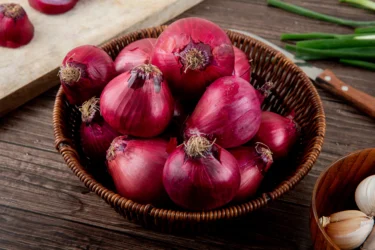
An animal study6 on rabbits found that dried onion powder might have a potential blood sugar-lowering (anti-hyperglycaemic) effect. Another study6 on rats showed that a bioactive compound present in onion might have a blood glucose-lowering effect. In yet another study6 conducted on patients with diabetes, the blood sugar-reducing potential of onion juice was noted. However, more research is required to prove the effects of diabetes home remedies Ayurveda might have to offer. Kindly consult an Ayurvedic physician before using any herbal supplement or remedy, keeping in mind the potential risks associated with any form of supplement and therapy, along with the risks involved when being treated with multiple forms of therapy simultaneously .
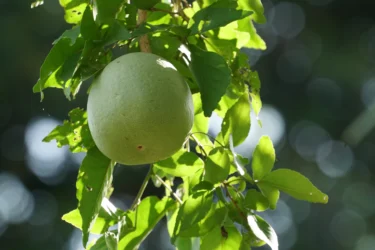
Bel, also known as Bengal quince or Bilva, is scientifically referred to as Aegle marmelos. It was seen in studies6, 7 that the leaves of the bel tree might have the potential to lower the sugar, urea, and cholesterol of the blood. It might also help to stop the sudden rise of blood sugar that usually occurs after eating food. However, more studies are required to prove the effects of such a natural cure for diabetes. Please do not use it without consulting a doctor.
It is important to undergo foot examination, eye examination, and perform kidney function tests at least every six months to one year for a diabetic patient (type 1 or type 2) as per international guideline recommendations as these are commonly involved organs which show complications as the disease progresses.
Dr. Ashish Bajaj, M.B.B.S., M.D. in Clinical Pharmacology and Toxicology
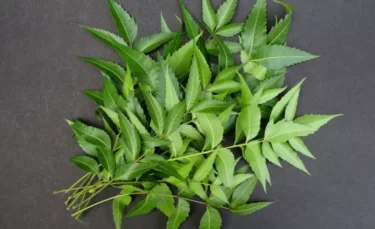
Animal studies6 have shown that neem might help lower blood sugar. It might help increase glucose uptake by cells and deposition of glycogen (complex sugar-containing glucose) in rats. However, more human studies are required on the possible use of neem for diabetes. You should consult a doctor.
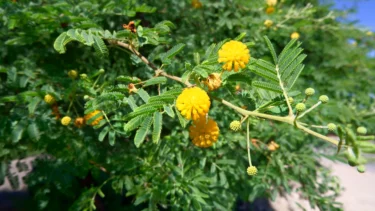
Its scientific name is Acacia arabica. It is found commonly all over India in the wild. It might have an anti-diabetic effect by potentially helping the release of insulin hormone and lowering blood glucose levels. In animal studies8, the seeds of babul were found to have the potential to decrease blood glucose levels by affecting the cells of the pancreas, which might help in insulin production. However, more studies are required to prove such claims; therefore, you should consult a doctor.
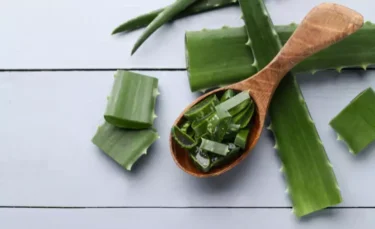
Aloe vera is another such herb which might have the potential to aid in managing diabetes. Animal studies8 have shown that Aloe vera might potentially decrease blood glucose and increase the capacity of cells to utilize glucose. It might also influence the secretion of insulin from the pancreatic cells9. However, more research is required to prove the potential uses of aloe vera for diabetes. Therefore, please consult a doctor.
Though there are studies that show the benefits of the given herbs and home remedies in diabetes, these are insufficient. There is a need for large-scale human studies to establish the true extent of the benefits of these home remedies on human health. Thus, these should only be taken with caution and never as a substitute for medical treatment.
Several medicinal plant have shown to be effective in different stages of diabetes, such as curcumin is proposed to be used as one of interventions in pre-diabetes therapy to prevent the progression of T2DM due to its proven benefits and safety profile,26 whereas, cinnamon can be a better option for diabetic patients who are having co-existing hypertension, and on the other hand, the extract of Aloe vera leaf gel with doses of demonstrated increased levels of insulin from regenerated pancreatic beta-cells10.
Dr. M.G. Kartheeka, MBBS, MD(Pediatrics)
Also Read: 45 Food Items That May Help To Control Blood Sugar!
Suppose you have not been diagnosed with diabetes and notice the symptoms of diabetes such as frequent urination, increased thirst, etc.; then you should visit a doctor and get a clear diagnosis. Your doctor will examine you thoroughly and reach a conclusion.
If you have already been diagnosed with diabetes, then you should visit a doctor if:
You must not rely on home remedies alone for the treatment of the condition and should consult a qualified doctor for any advice for the condition if the symptoms do not improve with home remedies.
Diabetes is a complex medical condition, and many factors might have a role in it. There are many factors that may affect the blood glucose level. It might occur due to the improper production or function of insulin, which is released from the pancreas. If you have diabetes, you might experience weakness, increased thirst, frequent urination, etc. Some home remedies that might help with diabetes are stress management, proper diet, onion, bel, etc. However, you should consult a doctor for the proper diagnosis and treatment of diabetes. If you are a known diabetic, ensure that you regularly consult your doctor, especially when your glucose levels reach out of the target range.
Also Read: How to Reduce Blood Sugar Level Immediately
No. Diabetes does not go away on its own. Please consult a doctor to receive a proper diagnosis and treatment plan for diabetes. Diet, exercise, and medicines form the keystones of managing and reversing diabetes.
Yes. Your doctor might recommend that you exercise as one of the most important ways for lowering and managing blood sugar, along with making you fitter.
Your doctor might recommend you include fruits and vegetables in your diet as they are rich in fibre. However, some fruits might be better to avoid. Therefore, kindly consult a doctor as to the fruits that can and cannot be consumed
Diabetes is a serious condition and must be diagnosed and treated by a doctor. However, some of the potential home remedies that might help with diabetes are onions, Bel, Neem, exercise, good food, stress management, etc. However, more research is required regarding the potential use of such natural remedies for diabetes. Kindly consult a doctor.
Disclaimer: The information provided here is for educational/awareness purposes only and is not intended to be a substitute for medical treatment by a healthcare professional and should not be relied upon to diagnose or treat any medical condition. The reader should consult a registered medical practitioner to determine the appropriateness of the information and before consuming any medication. PharmEasy does not provide any guarantee or warranty (express or implied) regarding the accuracy, adequacy, completeness, legality, reliability or usefulness of the information; and disclaims any liability arising thereof.
When you think about describing summer, many things might come to your mind, but all these descriptions will be incomplete without the image of a slice of watermelon. What can be better than watermelon on a hot summer day? Cool watermelon juice. Sounds better, right? Apart from being super refreshing, watermelon juice has a host of nutrients that make it a great addition to your regular diet.
Watermelon is a fruit native to the hot deserts of Africa named Kalahari. In recent times, it has been widely cultivated in tropical regions of the world. It is being grown in Egypt, the Republic of Korea, the United States of America, Iran and Turkey1.
The scientific name of watermelon is Citrullus lanatus, and it belongs to the family Cucurbitaceae, to which vegetables like cucumber and pumpkin belong1. Watermelon is a fruit and might have potential health benefits. Read on to learn more about why this light and tasty fruit could become your everyday favourite!
The nutrients present in watermelon juice and their percentage contents are as follows:
Minerals present in watermelon juice
Vitamins present in watermelon juice
Did you know?
Watermelon juice might have the following properties due to the various nutrients present in it:
Citrulline, an amino acid, is quite abundant in watermelon. According to studies, this amino acid may help in the synthesis of muscle protein, increase muscle mass, and improve other aspects of output obtained from exercise. In my experience, those who use citrulline supplements gain the most from these advantages2.
Dr. Siddharth Gupta, B.A.M.S, M.D (Ayu)
The red colour of the watermelon is due to the presence of a bioactive compound called lycopene in it. This compound (lycopene) is known to impart a red colour to fruits and vegetables. It is hypothesised that the potential health uses of watermelon may be due to the presence of lycopene in it1. This is the same lycopene that makes tomatoes red. The potential uses of watermelon juice are described as follows.
Multiple studies have shown that a bioactive compound (lycopene) present in watermelon juice might have the potential to protect cells from oxidative stress and free radicals by exhibiting potential antioxidant activity (neutralising free radicals). A study6 conducted by Kim et al. in 2011 on smokers showed that lycopene might help reduce oxidative stress. Therefore, watermelon juice might have potential use for reducing oxidative stress and inflammatory diseases caused by them1.
Studies conducted by Rao et al.5 in 2007, Wu et al.7 in 2007 and Moussa et al.in8 2008 hypothesised that drinking watermelon juice might be able to reduce the risk of certain types of cancer in women. Other studies have shown that watermelon juice might have a positive effect on colorectal cancer (cancer of the small intestines). It might be helpful for various other types of cancers as well. However, there is a need for more research on the benefits of watermelon juice for cancer. Cancer is a serious condition and requires proper diagnosis and treatment by a doctor1.
A study8 conducted in 2008 showed that watermelon might have the potential to help with increased blood glucose and may have potential in increasing insulin levels. Watermelon might owe this property to the presence of lycopene. In a huge study5 conducted over 10 years, from 1992 to 2003, researchers found that there might be a correlation between the bioactive compounds present in watermelon juice (lycopene) and insulin levels in the body. However, there is a need for more studies to prove such claims. Diabetes is a serious condition and should be diagnosed and treated by a qualified doctor1.
Watermelon juice might help in lowering the risk of heart diseases. This effect might be due to the presence of certain vitamins (A, B6 and C) and lycopene. For example, a study4 conducted by Zhang and Hamauzu in 2004 showed that the bioactive compounds present in watermelon might help with the thickness of blood vessels and may help decrease the risk of myocardial infarction. However, more research and studies are required to ascertain the potential use of watermelon juice for human heart health. You should consult a doctor for discomfort and problems related to the heart as it can be serious1.
Watermelon might have the potential to help with degenerative diseases of the eye like macular degeneration (causes blurring of vision). This might be due to the presence of certain compounds and vitamins present in watermelon. However, there is not much research related to the potential use of watermelon juice for the eyes. Therefore, there is a need for extensive research in laboratories, animals and humans to prove the claims mentioned earlier1. Please consult a doctor for problems related to the eye for proper diagnosis and treatment.
Though there are studies that show the potential uses of watermelon juice in various conditions, these are insufficient, and there is a need for further studies to establish the true extent of the benefits of watermelon juice on human health.
Despite having a lot of vital elements, watermelon is also very heavy in sugar. For diabetics or someone who is seeking to regulate blood sugar levels, this may make it a troublesome option. Furthermore, consuming alcohol may be problematic due to watermelon’s high lycopene concentration. When consumed simultaneously, they might irritate the liver. I recommend having watermelon juice in regulated quantity and in case of any problem, immediately reach out to your doctor2.
Dr. Rajeev Singh, BAMS
You can make watermelon juice at home. First, you need to take a watermelon and clean it. Then, cut it open and dice it into small pieces. You may or may not remove the seeds of the watermelon. Next, take the cut pieces of watermelon and blend them in a juicer or mixer. Some people suggest adding mint leaves and sage or squeezing a little bit of lemon into it to enhance the taste.
Nevertheless, you can drink it without adding anything else to it. If you prefer to drink it cold, you can also put it in the refrigerator before drinking it. You don’t have to add any extra sugar or syrup. You might even find bottled watermelon juice on the market. However, you should not use it as a medicine, in excess quantities or for daily use without consulting an Ayurvedic physician first.
You must consult a qualified doctor before taking any herbal supplements. Likewise, do not discontinue or replace an ongoing treatment of modern medicine with an ayurvedic/herbal preparation without consulting a qualified doctor.
A wide range of vitamins and antioxidants are abundant in watermelon. From my knowledge, it has lycopene, which may be beneficial for heart health and may shield the skin from UV rays2.
Dr. Smita Barode, B.A.M.S, M.S.
There is too little evidence in the form of studies to confirm the side effects of watermelon juice on human health. Thus, it cannot be confirmed if it doesn’t have any side effects. Therefore, there is need for more research to study the side effects of watermelon juice. It is advised that you consult an Ayurvedic physician before using it. Please do not self-medicate.
Also Read: Neem Juice: Uses, Benefits, Side Effects, and More!
General precautions should be taken before using watermelon juice. Ensure that you ask your doctor if it is safe to drink watermelon juice when you are pregnant or breastfeeding and while giving it to children, older individuals or people who are diagnosed or suspect any condition. Kindly do not self-medicate.
Also Read: Guava (Amrood) Juice: Uses, Benefits, Side Effects By Dr. Smita Barode
More research is required to assess the safety of watermelon juice with other drugs. It may react with medications. It is advised that you consult your doctor about drinking watermelon juice in large quantities due to its properties. They will be able to guide you appropriately as they might know your health condition in detail. Kindly do not alter, replace, avoid or discontinue any ongoing treatment. Please do not self-medicate.
Also Read: Corn Flour: Uses, Benefits, Side Effects By Dr. Rajeev Singh
Watermelon juice might have positive effects and may help with diseases of the heart, eyes, diabetes, etc. However, there is insufficient evidence to claim such benefits. Therefore, more research will be required to prove the potential uses of watermelon juice for human health1.
Watermelon juice might have the same effects on men as it has on women. It might have potential uses for the heart, eyes, diabetes, cancer, etc. However, more research is required to back up such claims1 .
Watermelon juice contains carbohydrates, proteins, fats, fibre, water, sugars, certain vitamins (A, B, C and E) and certain minerals (calcium, zinc, sodium, etc.). It also contains a bioactive compound called lycopene which gives a red colour to fruits and vegetables1.
There is insufficient data regarding the potential use of watermelon juice for skin. Therefore, there is a need for more research on this subject. However, it is advised that you consult a doctor before using any herb/medicine for health benefits. Kindly do not self-medicate.
No. There are no reliable reports stating the potential use of watermelon juice on an empty stomach. There is a need for more research in this area. Kindly consult a doctor and do not self-medicate.
No. You should consult a doctor who will give you sound advice about drinking watermelon juice based on your health condition and effects. It is at the discretion of the doctor to decide the course of treatment basis your consultation with them. Kindly consult a doctor before deciding to drink watermelon juice daily.
1. Naz A, Butt MS, Sultan MT, Qayyum MMN, Niaz RS. Review article: watermelon lycopene and allied health claims. EXCLI J. 2014;13:650–66. Available from: https://www.ncbi.nlm.nih.gov/pmc/articles/PMC4464475/
2. WebMD. Health Benefits of Watermelon [Internet]. [cited 2025 Sep 18]. Available from: https://www.webmd.com/diet/health-benefits-watermelon
3. WebMD. Health Benefits of Watermelon [Internet]. [cited 2025 Sep 18]. Available from: https://fdc.nal.usda.gov/food-details/1102760/nutrients
4. Zhang D. Phenolics, ascorbic acid, carotenoids and antioxidant activity of broccoli floret and stem. Food Chem. 2004;88(4):417–27. doi:10.1016/j.foodchem.2004.02.016. Available from: https://www.sciencedirect.com/science/article/abs/pii/S0308814604001517
5. Rao LG, Mackinnon ES, Josse RG, Murray TM, Strauss A, Rao AV. Lycopene consumption decreases oxidative stress and bone resorption markers in postmenopausal women. Osteoporos Int. 2007;18(1):109–15. doi:10.1007/s00198-006-0205-z. Available from: https://link.springer.com/article/10.1007/s00198-006-0205-z
6. Kim JY, Lee YJ, Kim YS, et al. Effects of lycopene supplementation on oxidative stress and endothelial function in healthy subjects. Am J Clin Nutr. 2011;93(1):126–33. doi:10.3945/ajcn.110.004064. Available from: https://www.sciencedirect.com/science/article/abs/pii/S0021915010009755
7. Wu G, Collins JK, Perkins-Veazie P, Siddiq M, Dolan KD, Kelly KA, Heaps CL, Meininger CJ. Dietary supplementation with watermelon pomace juice enhances arginine availability and ameliorates the metabolic syndrome in Zucker diabetic fatty rats. J Nutr. 2007 Dec;137(12):2680–5. doi: 10.1093/jn/137.12.2680. PMID: 18029483. Available from: https://www.sciencedirect.com/science/article/pii/S002231662209469X
8. Moussa M, Dufresne M, Dubeau S, et al. Lycopene absorption in human intestinal cells and in mice is mediated by scavenger receptor class B type I. J Nutr. 2008;138(5):882–7. doi:10.1093/jn/138.5.882. Available from: https://www.sciencedirect.com/science/article/pii/S002231662209887X
Disclaimer: The information provided here is for educational/awareness purposes only and is not intended to be a substitute for medical treatment by a healthcare professional and should not be relied upon to diagnose or treat any medical condition. The reader should consult a registered medical practitioner to determine the appropriateness of the information and before consuming any medication. PharmEasy does not provide any guarantee or warranty (express or implied) regarding the accuracy, adequacy, completeness, legality, reliability or usefulness of the information; and disclaims any liability arising thereof.
Links and product recommendations in the information provided here are advertisements of third-party products available on the website. PharmEasy does not make any representation on the accuracy or suitability of such products/services. Advertisements do not influence the editorial decisions or content. The information in this blog is subject to change without notice. The authors and administrators reserve the right to modify, add, or remove content without notification. It is your responsibility to review this disclaimer regularly for any changes.
Lauki or bottle gourd is considered a healthy vegetable and you may find it beneficial to add it to your diet. Lauki is scientifically known as Lagenaria siceraria and belongs to the family Curcurbitaceae. Lauki grows in tropical and subtropical countries such as India, Srilanka, South Africa, Malaysia and Indonesia1,2.
Lauki is also called calabash, doodhi, ghia, and kaddu in India. It is a pale green vegetable and is a staple in Indian cuisine. If you do not prefer consuming bottle gourd (lauki) in its whole form, you may consider incorporating it into your diet as a fresh juice. Lauki juice has a subtle, nutty flavour and contains naturally occurring antioxidants and minerals.
To prepare lauki juice, the vegetable can be blended using a juicer and then strained through a muslin cloth for a smoother consistency. Some individuals choose to add basil, which may help in extending its shelf life when stored appropriately2.
Lauki, also called white-flowered or calabash gourd, is a widely used vegetable in traditional diets. Its juice is considered a nutrient-rich beverage that is naturally low in calories and composed of approximately 96% water, which may contribute to its hydrating properties2.
The nutritional value of lauki juice per 100 grams is as follows3:
In some traditional practices, fresh lauki juice mixed with lemon juice is consumed as part of home remedies. It is sometimes suggested that this combination may offer a sense of relief from discomfort during urination. Lauki is known for its high-water content and is considered naturally hydrating, while lemon juice is mildly alkaline.
Dr. Siddharth Gupta, B.A.M.S M.D (Ayu)
Lauki juice is a nutrient-rich beverage. It contains essential vitamins and minerals that may be beneficial to human health2. Some commonly noted characteristics of lauki juice include4:
Lauki has a long-standing presence in traditional food cultures and was historically mentioned in various traditional systems of medicine. Today, lauki juice is sometimes included in regular diets due to its naturally occurring nutrients, including water, fibre, vitamins, and minerals1,2. Some of the potential uses of lauki are described as follows:
Lauki juice for weight loss might be a great idea given it is 95.5% water3! Lauki vegetable is considered a good option for weight management owing to its low-calorie content. It is said that lauki juice might help trim that extra belly fat. Lauki juice has a very low fat and cholesterol content and provides a good amount of dietary fibre, which may be beneficial in rapidly losing those extra inches2,4.
More studies are needed to support the potential use of lauki juice for weight management. Therefore, it is preferable to seek medical advice from a doctor before consuming lauki juice to help with weight management.
Lauki juice may potentially lower cholesterol levels. Preliminary research suggests that its naturally occurring dietary fibre and phytochemicals, such as saponins, may contribute to maintaining lipid balance in the body. These components are thought to assist in reducing total cholesterol and certain types of fats, while potentially increasing high-density lipoprotein (HDL), often referred to as “good” cholesterol. Saponins in particular may help enhance lipoprotein activity, which could help in the removal of unwanted fatty acids from the blood1.
However, these studies are not sufficient. We require more proof of the benefits of lauki juice in managing cholesterol levels in humans. Therefore, before using lauki juice for a cholesterol management diet, it is recommended to speak with a doctor.
Lauki juice is sometimes explored for its potential to support healthy blood sugar levels. Some preliminary studies have suggested that consuming lauki juice may help in the regulation of blood sugar following meals. This effect is thought to be related to the antioxidant properties present in the juice5.
It is important to note that the studies suggesting lauki juice may help regulate blood sugar levels have primarily been conducted on animals. More comprehensive research involving human participants is needed to confirm these effects. Therefore, lauki juice should not be used as a substitute for prescribed anti-diabetes medication. Individuals should always consult a qualified healthcare professional before considering lauki juice as part of any diabetes management plan.
Freshly prepared lauki juice is often recommended, particularly during the summer months, due to its natural cooling effect on the body. It may help with hydration by replenishing fluids lost through sweating, making it a refreshing option to support fluid balance.
Dr. Rajeev Singh, BAMS
While some studies suggest benefits of lauki juice, more research is needed to confirm its effects on human health. Individual responses may vary, so it is important to consult a doctor before using lauki juice for any medical condition.
Lauki juice a can be enjoyed in several ways:
It is essential to consult a general physician before taking any herbal supplements. Do not discontinue or replace your current medications with Ayurvedic or herbal preparations without professional guidance. A qualified physician or Ayurvedic doctor can recommend the most appropriate method of use based on your individual needs.
Some studies8 suggest lauki juice may support hair health and, when mixed with sesame oil, may aid sleep.
Dr. Smita Barode, B.A.M.S M.S.
Bitter lauki juice contains toxins (known as cucurbitacins) that might harm the upper digestive system6. The most common side effects of lauki juice are as follows7:
However, if you experience any of such side effects, seek immediate medical attention from your physician. They will be the best guide to provide you with proper treatment.
Drinking lauki juice in small quantities is safe. There is currently insufficient scientific evidence to confirm the safe use of lauki juice during pregnancy and breastfeeding. As it may contain certain natural toxins, it is essential to consult a physician before use. Extra caution is advised when giving lauki juice to young children or older adults, as their lower immunity may increase the risk of adverse reactions. Lauki juice should not be used for self-medication without medical guidance.
Also Read: What to Eat and What to Avoid in Appendicitis?
There is currently no scientific evidence confirming interactions between lauki juice and medications. However, this does not mean such interactions do not exist. It is advisable to consult an Ayurvedic physician, who can provide guidance on the appropriate and safe use of lauki juice as a herbal supplement.
Also Read: Beetroot Juice: Uses, Benefits, Side Effects and More!
Lauki juice, rich in water, fibre, and essential nutrients, is valued for its potential health benefits including hydration, digestive support, and possible roles in managing weight, cholesterol, and blood sugar levels. However, it must be consumed cautiously, always fresh and in moderation, due to the risk of toxicity from bitter variants. Consulting a healthcare professional before adding lauki juice to your routine is strongly advised.
Also Read: Ash Gourd Juice: Uses, Benefits, Side Effects and More!
There is not enough information to confirm that lauki juice has any benefits for pregnancy. Therefore, due to a lack of scientific evidence, it is better to avoid lauki juice during pregnancy. You can also contact your doctor to learn more about this.
Drinking lauki juice might help to maintain healthy hair. However, more studies are required to support this claim. Consult a doctor before making any changes to your diet.
Lauki juice might demonstrate benefit in managing blood sugar levels. This is because it contains antioxidants such as vitamin C, which may be helpful in regulating the levels of sugar in the blood. However, this information is not enough; more studies are required to support the benefits of lauki juice on human health.
Lauki juice contains vitamins such as vitamin C, vitamin B2, vitamin B1, vitamin B3, vitamin B9, and vitamin B6. Vitamins play an essential role as potential antioxidants, which might be beneficial in neutralising free radicals.
Lauki juice contains a potential toxin, which is a tetracyclic triterpenoid compound called cucurbitacins, which may be responsible for the bitter taste and toxicity. Thus, taking precautions before having lauki juice is crucial, as it may cause side effects.
Disclaimer: The information provided here is for educational/awareness purposes only and is not intended to be a substitute for medical treatment by a healthcare professional and should not be relied upon to diagnose or treat any medical condition. The reader should consult a registered medical practitioner to determine the appropriateness of the information and before consuming any medication. PharmEasy does not provide any guarantee or warranty (express or implied) regarding the accuracy, adequacy, completeness, legality, reliability or usefulness of the information; and disclaims any liability arising thereof.
Gout can make life difficult for people who want to live an active and happier life. Gout is a type of arthritis characterised by joint pain and swelling. It is due to the accumulation of uric acid crystals in the joints. Gout can occur in joints, tendon sheaths (membranes surrounding tendons; tendons are tissues that connect bones and muscles), kidneys, and bursae (cushion-like sacs between bones and connected soft tissues). Many people get the first flare of gout on their big toes. Gout is a common phenomenon, especially in middle age. Men are more prone to gout than women. Women develop gout usually after menopause. Gout is a rare occurrence in the younger population. The gout pain often fares up at night and sometimes becomes painful enough to wake people up1. Gout has no cure, but it is possible to treat and manage the symptoms with self-management strategies2.
It is essential to relieve gout pain and swelling for people to live a comfortable life. These home remedies might help you with that.
Too much uric acid or urate in the body forms crystals. These crystals get accumulated in the joints, causing symptoms like swelling, stiffness, and pain. The factors listed below may increase your chances of developing gout:
Daily intake of turmeric and aloevera which contains curcumin as active ingredients have high anti-inflammatory properties. Reasearch shows that daily intake of aloevera and turmeric orally reduces the pain in long-term.
Dr. M.G. Kartheeka, MBBS, MD(Pediatrics)
Gout can make life difficult for people. If you are suffering from gout, you might experience symptoms like:
Gout is a painful condition that can make life difficult. It affects several aspects of everyday life, including leisure and work activities. However, you can use these home remedies to manage gout symptoms and lead a comfortable life.
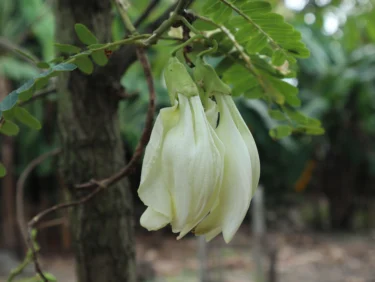
Agastya is a plant known as West Indian pea or august flower in English. It has anti-inflammatory (reduces inflammation) and analgesic (pain-relieving) properties. You can use the root and bark of the Agastya plant to make a paste. You can apply this paste externally to relieve the pain and swelling associated with gout4.
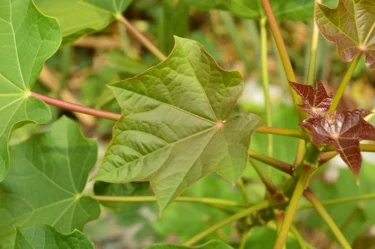
Castor leaves, or Arand is a herbal remedy effective in many health conditions. You can also use Castor leaves to relieve swelling and pain in the joints. To use castor leaves, make a paste using mature leaves. To this paste, add a little amount of crystal salt. Warm this mixture. Apply this mixture (lukewarm) over the joints. It can help reduce the pain and swelling of the joints4.
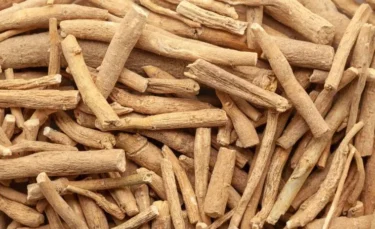
Ashwagandha, or Indian ginseng, is a potent herb with many health benefits. Ashwagandha intake can help you increase your energy and strength. The benefits of ashwagandha might help you manage gout. To use asvagandha, you can mix asvagandha powder with kapikacchu and black sesame seeds. Mix it thoroughly and take this mixture with a glass of milk to manage problems such as arthritis4.
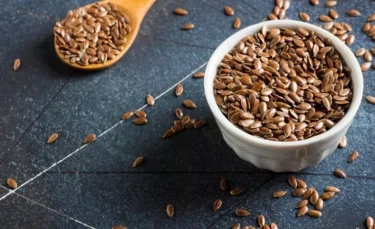
Alsi or linseed seeds have many medicinal benefits. Alsi seeds possess pain-relieving properties when applied topically to the skin. Soak some alsi seeds in buttermilk through the night. Use these soaked seeds to make a fine paste the following day. You can apply this paste to the affected joints when required. Applying this paste can help you relieve joint pain4.
Gout may not just affect the joints of the foot but may also affect other joints of the body. It may seem like a very painful or incapacitating condition, but is very much treatable when diagnosed early and managed appropriately.
Dr. Ashish Bajaj, M.B.B.S., M.D. in Clinical Pharmacology and Toxicology

Following a more nutritious diet plan can help you live a better life. Eating foods rich in purines may trigger a gout flare. You can avoid foods such as organ meat, red meat, and seafood. You also need to avoid alcohol intake, especially hard liquor and beer2.

To manage arthritis, it is recommended that adults engage in at least 150 minutes of physical activity every week. Every minute of physical activity is valuable. The exercises recommended are moderate to low impact, for example, walking, biking, and swimming. Doing regular physical exercise will also help you avoid the risk of other health conditions like diabetes, stroke, and heart diseases2.

If you are overweight or obese, losing weight will help reduce the pressure on your joints, especially hip and knee joints. You can try maintaining a healthy body weight to improve your symptoms. Healthy body weight will relieve pain, improve overall functioning, and lower the disease progression2.

Getting joint injury while you have gout will worsen your condition. Try engaging in activities that do not put much pressure on the joints. Engaging in easier activities like cycling, walking, and swimming can help you prevent the worsening of your symptoms and prevent further damage. These activities have a low impact on your joints and lower risk2.
Also Read: Feel Like Throwing Up? What You Should and Shouldn’t Do According to Doctors
You can contact your healthcare provider or doctor if you experience severe kind of joint pain and your joints feel warm and swollen3.
Also Read: Home Remedies For Gas
Gout is a type of arthritis caused by a buildup of crystals of uric acid in the joints. It is characterised by swelling and pain in joints. It can severely affect people’s day-to-day activities. Work as well as leisure activities of people get affected. Although there is a lack of specific treatment for gout, you can manage the symptoms and lead a comfortable life with some lifestyle and diet changes.
You can also use herbs like Asvagandha, Alsi, Castor, and Agastya to relieve gout symptoms at home. Gout is a severe condition of the joints that requires proper medical diagnosis and intervention. You need to get in touch with your healthcare provider if you experience severe pain in your joints accompanied by swelling and heat.
Also Read: Doctor-Approved Home Remedies For Vertigo
You can use natural remedies like Asvagandha powder, Alsi seeds, Castor leaves, and the bark of Agastya to manage gout symptoms at home. You can use these herbs to relieve the symptoms of gout4. You can also manage the gout symptoms at home by following a healthy diet, exercising regularly, and maintaining a healthy body weight. Also, protecting the affected area from injuries is important. Getting injured when you have gout will worsen the condition and prevent the healing2.
With some lifestyle and diet changes, you can prevent gout. Lifestyle changes include drinking plenty of water and exercising regularly to maintain a healthy body weight. You can also make the following diet changes to avoid gout. You must avoid: Organ meat and red meat
Alcohol
Shellfish
Foods and drinks with high fructose
Protein sourced from animal origins3
Yes, obesity is one of the significant risk factors for gout. Being overweight or obese puts excessive pressure on your joints1.
If you are experiencing severe joint pain, and think you might have gout, reach out to your healthcare provider immediately. Your doctor will perform a physical examination. Besides a physical examination, your doctor can also ask you to get diagnostic tests like X-rays and laboratory tests done. Gout is mainly diagnosed during a gout flare, during which the joint is painful, swollen, and hot to touch2.
Gout has other complications as well. Gout can turn into its long-term form, chronic gout, where people suffer from frequent attacks. Many people who suffer from chronic gout can also develop tiny white lumps beneath the skin surface. These bumps are called tophi, which usually appear on fingers, ears, and elbows. Gout is the result of a high amount of uric acid crystals in the blood. These crystals can get accumulated in the kidneys and lead to kidney stones.
Yes, you can control the symptoms with proper diet and lifestyle changes. Gout is a controllable form of arthritis1. You also need to contact your healthcare provider and get the necessary treatment. It will help you prevent the condition from worsening.
1. NIAMS. Gout Symptoms, Causes & Diet Recommendations [Internet]. [cited 2022 May 30]. Available from: https://www.niams.nih.gov/health-topics/gout
2. Cleveland Clinic. Gout: Causes, Symptoms, Treatment & Prevention [Internet]. [cited 2022 May 30]. Available from: https://my.clevelandclinic.org/health/diseases/4755-gout
3. Ayush Division. Ayurveda offering Herbal healing. Available from: https://esic.gov.in/attachments/publicationfile/7d11b02e5abb4717d53b4ce05efabd21.pdf
4. NHS. Gout [Internet]. [cited 2022 May 30]. Available from: https://www.nhs.uk/conditions/gout/
Disclaimer: The information provided here is for educational/awareness purposes only and is not intended to be a substitute for medical treatment by a healthcare professional and should not be relied upon to diagnose or treat any medical condition. The reader should consult a registered medical practitioner to determine the appropriateness of the information and before consuming any medication. PharmEasy does not provide any guarantee or warranty (express or implied) regarding the accuracy, adequacy, completeness, legality, reliability or usefulness of the information; and disclaims any liability arising thereof.
Links and product recommendations in the information provided here are advertisements of third-party products available on the website. PharmEasy does not make any representation on the accuracy or suitability of such products/services. Advertisements do not influence the editorial decisions or content. The information in this blog is subject to change without notice. The authors and administrators reserve the right to modify, add, or remove content without notification. It is your responsibility to review this disclaimer regularly for any changes.
Did you know that pomegranate comes under the category of berry? Yes, it’s true. However, it has its own family called Punicaceae, to which it belongs. Punica granatum L. also known as pomegranate, is a plant that can grow even in dry areas. It is widely cultivated in India, Iran, Turkey, Egypt, Morocco, Spain and Tunisia1. Along with date palm, fig, grape and olive, pomegranate is one of the oldest cultivated fruit2.
Furthermore, pomegranate might have health benefits, so consuming it may be fruitful. Due to its high antioxidant content, humble pomegranate juice may be more beneficial than green tea or red wine1. The potential uses of pomegranate juice have been explained in detail below.
The nutrients in pomegranate juice and their percentage content are as follows:
It also contains small amounts of:
Did you know?
Pomegranate juice may be of use as it may have the following properties:
Pomegranate (Anar) juice may have potential uses due to its properties. Some of the potential uses of pomegranate juice are as follows:

Pomegranate juice may have potential benefits for the skin, as observed in a study1. The results show that it might protect the skin from harmful ultraviolet rays of the sun (UV-B radiation) by preventing the production of certain toxic compounds in the skin. This action of pomegranate juice might help with photo-aging (age changes of the skin caused by light) and skin cancer.

Elevated blood pressure (known as hypertension) is one of the common diseases occurring in people nowadays. Various studies have shown that pomegranate juice might help with high blood pressure. For example, one animal study1 showed that giving pomegranate juice to rats regularly might help the mean arterial blood pressure(i.e. the average blood pressure during each heart cycle). However, more research is needed to know the exact role it plays and how safe it is.

Research on animals has shown that the potential use of pomegranate juice for weight loss might be due to the presence of bioactive compounds, which act in different ways like decreasing lipid (fats) formation, increasing fat breakdown, and inhibiting the enzymes responsible for fat formation. These actions might help in losing weight2. However, there is a need for much more comprehensive human research to prove its use.
I’ll let you know an amusing study result. In a study, pomegranate juice was tested for improving erections in men with mild to moderate erectile dysfunction. After consuming the juice approximately 47% of participants reported possible improvement. Although statistical significance was not reached, the study suggests that larger groups and longer action periods may show more conclusive results8.
Dr. Smita Barode, B.A.M.S, M.S.

In people with diabetes, there is usually a sudden rise in blood sugar immediately after taking food. Recently, in laboratory studies, it was seen that pomegranate juice might have the potential to help in lowering blood glucose levels post-prandially (after food). This action might be because pomegranate juice may reduce the digestibility of starch (a complex sugar)2. This might be one of the advantages of pomegranate juice for diabetes. However, more research is required for its safe use.

A wide range of research has shown that pomegranate juice might be valuable as it can potentially affect cancer, affecting different organs. Some of the potential uses are as follows:
There is insufficient evidence available for the use of pomegranate juice for cancer. Therefore, there is a further need for more research on using pomegranate juice for cancer that needs concrete scientific evidence.

Arthritis is a disease which affects the joints. There are different kinds of arthritis, and pomegranate might be helpful for osteoarthritis (disease-causing destruction of joints slowly and progressively) and rheumatoid arthritis (autoimmune disorder the immune system causes joint destruction).
In my perspective, by regularly consuming pomegranate juice, you may be able to protect your arteries and promote heart health. Pomegranate juice contains antioxidants that might reduce oxidative stress and help ward off atherosclerosis, a condition where plaque builds up in the arteries7.
Dr. Rajeev Singh, BAMS
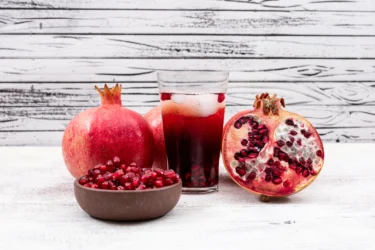
Pomegranate juice might be beneficial in the following conditions:
Though there are studies that show the potential uses of pomegranate juice in various conditions, these are insufficient, and there is a need for further studies to establish the true extent of the benefits of pomegranate juice on human health.
I came across a shocking research! It suggests that drinking pomegranate juice might help reduce oxidative stress in the placenta of pregnant women. It may also avert the death of important cells in the placenta called trophoblasts. This means that consuming pomegranate juice during pregnancy may potentially protect the placenta and benefit the developing baby6.
Dr. Siddharth Gupta, B.A.M.S, M.D (Ayu)
Pomegranate juice can be found on the market in the juice form, ready to drink. You can also make fresh pomegranate juice using the pomegranate fruit. You can take a pomegranate and peel off the skin, pick out the seeds, and blend them in a juicer or blender to get fresh pomegranate juice. Then, you can drink the fresh juice of pomegranate as it is without adding anything else.
You must consult a qualified doctor before taking any herbal supplements. Do not discontinue or replace an ongoing treatment of modern medicine with an Ayurvedic/herbal preparation without consulting a qualified doctor.
There are no sufficient reports to show the side effects of pomegranate juice when taken in moderation. However, you should ensure that you are not allergic to pomegranate before drinking it. In addition, do not use it for self-medication or replacing an ongoing therapy medicine. You should consult your Ayurvedic physician, who will be able to guide you regarding the particular usage of pomegranate juice if and when necessary for your specific condition. The choice of treatment is at the discretion of your doctor basis your consultation with them.
Also Read: Orange Juice: Uses, Benefits, Side Effects, and More!
General precautions are to be followed when you take pomegranate juice. Suppose you are suffering from any condition or are on any medication a discussion with your doctor before taking pomegranate juice is better, as some medicines might react with it. Furthermore, pregnant women or breastfeeding should also consult a doctor regarding the safety of pomegranate juice before drinking it.
Also Read: Beetroot Juice: Uses, Benefits, Side Effects and More!
Studies on mice have shown that pomegranate juice may alter or interfere with the activity or breakdown of the following drugs:
Therefore, if you are on any medication, you should ensure that you discuss with your doctor whether it’s safe to take pomegranate juice or not.
Also Read: Giloy Juice: Uses, Benefits, Side Effects, and More!
Drinking pomegranate juice might help with the skin, arthritis, blood sugar, etc1,2. However, more studies are required to state the use of pomegranate juice for human health.
Pomegranate (Anar) might potentially aid weight loss by reducing the formation of fats, increasing their breakdown and decreasing their production. Therefore, pomegranate juice might have the potential to help with weight loss2. However, more research is required to claim the above-stated effects.
Pomegranate juice might be good for the skin as it may help in protecting the skin from the sun’s harmful ultraviolet rays (UVB), photo-ageing and skin cancer1. However, extensive research is required to prove the potential uses of pomegranate juice for the skin.
The health uses of pomegranate juice are that it might potentially have effects on the skin, diabetes, weight loss, blood pressure, cancer, osteoarthritis, rheumatoid arthritis, Alzheimer’s disease, wound healing, HIV and other infections and malaria1,2. However, more research is required for the use of pomegranate juice for human health.
There are no reports of the benefits of pomegranate juice when applied to hair. There is a need for more research on this subject.
Pomegranate juice might be good for you in moderation as it may have the potential to help your body. It may be helpful for the skin, cancer, blood pressure, arthritis, etc1,2. However, there is a need for more research to claim the benefits of pomegranate juice for human health.
There are no reports regarding the benefits of pomegranate juice for anaemia. There is a need for more research on this subject.
There is no evidence stating the use of pomegranate juice for good eyesight. There is a need for more research on this subject.
Disclaimer: The information provided here is for educational/awareness purposes only and is not intended to be a substitute for medical treatment by a healthcare professional and should not be relied upon to diagnose or treat any medical condition. The reader should consult a registered medical practitioner to determine the appropriateness of the information and before consuming any medication. PharmEasy does not provide any guarantee or warranty (express or implied) regarding the accuracy, adequacy, completeness, legality, reliability or usefulness of the information; and disclaims any liability arising thereof.
Links and product recommendations in the information provided here are advertisements of third-party products available on the website. PharmEasy does not make any representation on the accuracy or suitability of such products/services. Advertisements do not influence the editorial decisions or content. The information in this blog is subject to change without notice. The authors and administrators reserve the right to modify, add, or remove content without notification. It is your responsibility to review this disclaimer regularly for any changes.
Every part of the drumstick might contain essential properties for human health; hence, it may be one of the crucial nutritional herbs. For many years, the drumstick has been used as a traditional medicine. According to the Ayurvedic system of medicine, drumsticks may have potential use and be helpful for various diseases due to their high nutritional value, water retention and capacity for purification1.
Drumstick provides large and rare varieties of vital minerals and nutrients. Pods, leaves, flowers, barks, roots and seeds of drumsticks also contain bioactive compounds2.
The major constituents of the drumstick possess biological activities that might play a role in its potential use in several medicinal systems such as Ayurveda, homeopathy, Unani, yoga, naturopathy, and Siddha1. The potential properties of drumstick are as follows3:
Drumsticks might have a wide range of uses with high nutritional value. Various parts of this plant act as stimulants that might possess various activities employed to help with different diseases in the indigenous systems of medicine, particularly in South Asia4. Some of the potential uses of drumstick are described as follows.
The leaf extract of drumstick might show potential anti-diabetic properties that might help lower blood glucose levels. An animal study5 (Gupta R et al. 2012) showed that the extract of leaves of drumsticks might help reduce the progression of diabetes and may induce a reduction in serum glucose levels by increasing the production of protein and insulin hormone.
Another animal study6 showed that the extract of drumstick leaves might help control glucose levels, urinary sugar and protein levels, haemoglobin, and total protein in the blood. However, more studies are required to ascertain the above-mentioned claims. Kindly consult a doctor, as diabetes is a serious condition and should be diagnosed and treated by a doctor.
Various animal studies7 (B.S. Rathi et al. 2006, V.I. Hukkeri et al. 2006) suggest that the extracts from dried leaves of drumsticks might show wound healing action in animal models over granuloma (dead space), excision, and incision. It also significantly decreases scar area, might help in increasing wound closure, and may strengthen skin healing. However, more studies are required on humans to prove the potential uses of drumsticks for wound healing.
Barks, leaves, seeds, flowers, and roots of drumsticks might have a diuretic activity that may be helpful for urine formation in patients with kidney dysfunction. It might also help to lower the deposition of oxalate salts (stones forming units) in the kidneys. An animal study8 (R.V. Karadi et al. 2008) found that the extract of drumstick root lowers the kidney retention of salts and excretion in the urine. Moreover, these extracts also reduce elevated serum uric acid and creatinine levels. This information is insufficient as these studies were done on animals. However, more studies on humans are required to back this claim. Kidney diseases are serious and must be diagnosed and treated by a doctor, so kindly consult a doctor. We recommend do not use drumsticks to self-medicate.
The leaves and seeds of the drumstick might show potential anti-tumour activity. They contain certain compounds which might act as inhibitors and may inhibit the activity of tumour-promoting molecules10. In-vitro studies9 on human cancer cells showed the potential toxic effects of drumstick leaf extracts on cancer cells at the highest dose, contributing to the least survival of cancerous cells. However, much more extensive research is required to prove the potential use of drumsticks for cancer. Moreover, cancer is a serious condition and must be diagnosed and treated by a doctor.
Though there are studies that show the potential uses of drumsticks in various conditions, but these are insufficient and there is a need for further studies to establish the true extent of the benefits of drumsticks on human health.
Drumstick can be used in the following ways:
You should always consult your doctor before consuming a drumstick for regular use. They will be the best person to prescribe you the correct form and dosage as per your health condition.
You must consult a qualified doctor before taking any herbal supplements. Do not discontinue or replace an ongoing treatment of modern medicine with an ayurvedic/herbal preparation without consulting a qualified doctor.
Over the last few years, drumsticks have been significantly researched due to their natural origin and fewer side effects. It is an anti-allergic agent and might be used as a herbal remedy under the supervision of an Ayurvedic physician. However, some people might experience allergic reactions to the seedpods of the drumstick. The most common side effects are:
Also Read: Methi (Fenugreek): Uses, Benefits, Side Effects, and More!
Drumstick (Sahjan) is generally considered to be safe if it is consumed in small quantities. However, general precautions have to be followed to avoid complications.
Kindly do not self-medicate, alter, replace, or discontinue any ongoing treatment on your own. Please ensure to consult your doctor regarding health issues.
Also Read: Lady Finger (Bhindi): Uses, Benefits, Side Effects and More!
Drumstick contains many bioactive compounds, which interact with certain drug-metabolising enzymes, resulting in alterations in drug absorption, distribution, metabolism and elimination from the body and possibly causing toxicity and failure of treatment. The leaf extract of the drumstick inhibits one of such enzymes, which is responsible for the detoxification of medicines.
Kindly consult a doctor before consuming drumsticks and make sure that it is safe for you.
Also Read: Paneer: Uses, Benefits, Side Effects By Dr. Smita Barode
Drumstick contain vitamins such as vitamin A, C, B1, B2, B6, and B9, which might be beneficial for various health conditions2. However, people should not use drumsticks to self-medicate prior to consulting a doctor.
There is insufficient and inconclusive data regarding the potential use of drumsticks during pregnancy. Kindly consult your gynaecologist and confirm its safety before eating it.
Yes, the leaf extracts of the drumstick might be helpful for thyroid hormones, which might further help with hyperthyroidism (excess thyroid hormones)13.
A skin prick test is a potential diagnostic tool for determining allergic reactions caused by drumstick.
Yes, moringa and drumstick typically refer to the same plant, Moringa oleifera. In some regions, the long, slender pods of the Moringa tree are commonly referred to as drumsticks due to their resemblance to drumsticks used in percussion instruments. Moringa is known for its nutritional benefits and is consumed in various forms worldwide.
Yes, drumstick (Moringa oleifera) contains calcium, albeit in relatively modest amounts compared to other calcium-rich foods. However, it can still contribute to your overall calcium intake, which is important for maintaining bone health, especially during pregnancy and lactation.
Drumstick (Moringa oleifera) is not known to significantly increase uric acid levels. In fact, it is often considered beneficial for managing uric acid due to its anti-inflammatory properties and potential to support kidney health. However, individual responses to foods can vary, so it’s advisable to monitor your body’s reaction and consult with a healthcare professional if you have concerns about uric acid levels.
Drumstick (Moringa oleifera) is not known to significantly increase blood pressure. In fact, it may have the opposite effect due to its high potassium content, which can help regulate blood pressure by counteracting the effects of sodium. However, individual responses to foods can vary, so it’s essential to monitor your blood pressure levels and consult with a healthcare professional if you have concerns.
Yes, drumstick pods can be eaten raw, but they are often cooked before consumption to soften their tough texture and enhance flavour. However, some people enjoy adding raw drumsticks to salads or using them as a crunchy addition to dishes.
Yes, the drumstick (moringa) is high in potassium. It contains significant amounts of this essential mineral, which plays a crucial role in maintaining proper heart and muscle function.
Disclaimer: The information provided here is for educational/awareness purposes only and is not intended to be a substitute for medical treatment by a healthcare professional and should not be relied upon to diagnose or treat any medical condition. The reader should consult a registered medical practitioner to determine the appropriateness of the information and before consuming any medication. PharmEasy does not provide any guarantee or warranty (express or implied) regarding the accuracy, adequacy, completeness, legality, reliability or usefulness of the information; and disclaims any liability arising thereof.
After your morning exercise, a quick run, or to beat the summer heat, a glass of orange juice can help you feel refreshed and energised. Orange juice is obtained from the fruit pulp of the plant Citrus sinensis, also known as sweet orange. The orange fruit tree may be native to Asia, but it is now grown worldwide. Orange juice is either sweet or sour in taste1. It is one of the most commonly consumed juices across the world2. It is the chief source of vitamin C and other bioactive and nutritional components. It is often consumed as a healthy source of calories and is recommended by many healthcare professionals3.
Behind that bright orange, sweet, refreshing drink, orange juice is more than that meets the eye. If you want to know more about orange juice’s health benefits, keep reading!
Orange juice is packed with nutrients, vitamins, and minerals. The nutritional value of 100 grams of orange juice is given below.
Orange juice is a rich source of several active compounds, for example, flavonoids. The bioactive and nutritional compounds have various potential benefits, which are mentioned below.
Several potential benefits of orange juice are given below.

Many people notice a decline in their cognitive abilities as they age. Cognitive functions are the functions associated with memory, reasoning, and thinking. People who consume orange juice daily might show improvement in their cognitive functions. As per a trial performed on older, healthy individuals, consumption of orange juice could improve overall cognitive performance. The said benefit can be attributed to a high content of flavones present in orange juice2.

Orange juice may benefit the heart and reduce the risk of developing heart diseases. Orange juice intake can be helpful to lower cholesterol and blood pressure, which are the risk factors for heart diseases. These benefits have been observed in human trials but seem to be insufficient to validate the extent to which it can benefit human health3.
As per my observations drinking orange juice, whether it’s commercial or fresh, may be good for your heart. A study found that both types of orange juice might improve blood vessel function and reduce inflammation. However, further study is required to determine the long-term impacts11.
Dr. Siddharth Gupta, B.A.M.S, M.D (Ayu)

Intake of orange juice is associated with potential of reducing the risk of developing obesity. Orange juice is considered a better diet choice because of the presence of many nutrients. Orange juice also showed possible effects on body mass index, lipid, and cholesterol levels, which are markers of overweight or obesity, as per the National Health and Nutrition Examination Survey, 20033. Consult you doctor or nutritionist before adding anything in your diet for weight loss benefits.
Based on certain studies, I have observed that consuming orange juice with meals may have a more positive impact than consuming it between meals. In a study, when orange juice was consumed between meals, it was associated with a possible increase in body fat. On the other hand, consuming orange juice with meals resulted in a potential decrease in body fat12.
Dr. Rajeev Singh, BAMS

Orange juice extract might have a potential negative effect on the growth of human prostate cancer and lung cancer cell lines as per an animal trial. Orange juice could also be helpful for human blood cancer cell lines. Similarly, orange juice may also have beneficial properties in reducing the growth of breast cancer cells. These activities have been observed in lab trials1. However, the actual benefits of orange juice for cancer in humans needs further studies to establish.

The antimicrobial activity of orange juice against several disease-causing bacteria has been observed in many lab studies. Orange juice may have the potential to stop the growth of several bacteria like Staphylococcus aureus, Bacillus subtilis, Escherichia coli, and Shigella1.
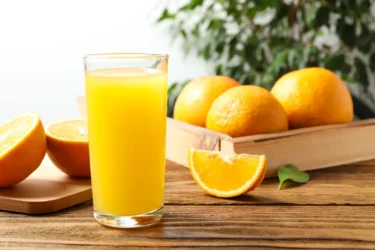
The inflammation process of our body is linked with many long-term diseases, for example, metabolic syndrome, obesity, and heart diseases. Consumption of orange juice may cause favourable changes in inflammatory factors, which might help reduce the risk of metabolic diseases. Taking orange juice in moderate amounts may help maintain a healthy diet and prevent metabolic diseases3.
Though there are studies that show the benefits of orange juice in various conditions, but these are insufficient and there is a need of further studies to establish the true extent of benefits of orange juice on human health.
Based on my readings, regularly consuming fresh orange juice might increase the levels of skin carotenoids, which indicate antioxidant status in the body. A study result suggests that orange juice consumption might boost skin carotenoids, but the duration of the effect may depend on individual factors13.
Dr. Smita Barode, B.A.M.S, M.S.
You can drink raw orange juice. Processed orange juice is also used for flavouring ice creams and jellies5.
You must consult a qualified doctor before taking any herbal supplements. Do not discontinue or replace an ongoing treatment of modern medicine with an Ayurvedic/herbal preparation without consulting a qualified doctor.
Based on what I’ve seen, orange juice might act as a natural barrier against kidney stone development. It has citrate in it, which may help dissolve those painful kidney stones14.
Dr. Anuja Bodhare, B.A.M.S, M.D (Ayu)
Orange juice is one of the most commonly consumed juices worldwide. However, few cases of allergic reactions in sensitive people have been reported. Allergic reactions involved yellowing of the skin and sleeplessness6. You must be mindful while consuming orange juice and drink it in moderation.
Also Read: Lemon Water: Uses, Benefits, Side Effects and More!
There are certain general precautions you need to take while drinking orange juice
Moreover, you must follow general precautions and instructions given by your doctor while consuming orange juice regularly. Do not self-medicate and consult a doctor for advice on using any herb for health benefits.
Also Read: Carrot Juice: Uses, Benefits, Side Effects and More!
Orange juice can interact with other drugs in the body. The drugs interacting with orange juice are given below.
So, you need to discuss your daily orange juice intake and details of different medicines prescribed to you for use with your Ayurvedic physician. They will tailor their prescription to suit your health needs.
Also Read: Ash Gourd Juice: Uses, Benefits, Side Effects, and More!
Orange juice is good for weight loss. Consumption of orange juice may help you reduce the risks of obesity. It also helps with weight loss, lowering cholesterol and lipids. You can make orange juice a part of your diet as a healthier source of calories3.
Orange juice is a chief source of vitamin C. vitamin C is a potent antioxidant with many skin benefits. Vitamin C is responsible for the repair and healing of tissues and scars. It helps to promote the synthesis of collagen (a protein essential for the structure and function of skin) in the skin. It also may help protect from the sun-induced skin damage9,10. You must consult your skin doctor for advice on the benefits of any herb for the skin.
Orange juice is packed with many nutritional benefits like carbohydrates, proteins, fibres, and minerals like iron, calcium, zinc, and sodium. Vitamins such as vitamins A, C, and B are also present in orange juice. Drinking orange juice might also help with conditions such as heart diseases, obesity, and cancer1,4. You must consult a doctor for serious medical conditions before consuming herbs for its benefits.
Drinking orange juice may help you reduce the risk of heart disease. Orange juice is valuable to help lower cholesterol and blood pressure, which are major risk factor for heart diseases. However, you are advised to talk to a doctor and follow their advice if you are suffering from any heart condition3.
Some cases of allergies have been reported in sensitive people after drinking orange juice. The symptoms of allergic reactions include sleeplessness and yellowing of the skin6.
Disclaimer: The information provided here is for educational/awareness purposes only and is not intended to be a substitute for medical treatment by a healthcare professional and should not be relied upon to diagnose or treat any medical condition. The reader should consult a registered medical practitioner to determine the appropriateness of the information and before consuming any medication. PharmEasy does not provide any guarantee or warranty (express or implied) regarding the accuracy, adequacy, completeness, legality, reliability or usefulness of the information; and disclaims any liability arising thereof.
Links and product recommendations in the information provided here are advertisements of third-party products available on the website. PharmEasy does not make any representation on the accuracy or suitability of such products/services. Advertisements do not influence the editorial decisions or content. The information in this blog is subject to change without notice. The authors and administrators reserve the right to modify, add, or remove content without notification. It is your responsibility to review this disclaimer regularly for any changes.
Pineapple is known to be the queen of fruits because of the excellent taste and refreshing flavour it bears. After banana and citrus, pineapple is considered the third most important fruit in the world. Pineapple is botanically called Ananus comosus. The taste and quality of pineapple juice depend upon the season, geographical areas, process and time of harvest. Pineapple fruit’s refreshing flavour and taste are contributed by the perfect balance between sugar and acid1,2.
The pineapple is a herbaceous annual plant that grows in tropical regions. The leading producer of pineapples are Brazil, Thailand, China, the Philippines, and others include India, Kenya and Nigeria. There are different varieties of pineapples, namely Honey King, Pernambuco, Giant Kew, Red Spanish, and Smooth Cayenne. Pineapples may be beneficial and used in the diet of people suffering from diseases. Pineapple juice is a fresh, concentrated liquid prepared from pineapple fruit pulp. It is a natural cocktail of beneficial enzymes, vitamins and minerals, which may make it a beneficial morning drink1,3.
So, read along to know more about the potential benefits, medicinal uses and side effects of pineapple juice on human health.
Did you know?
Pineapple’s nutritional value may make it healthier food. A single glass of pineapple juice offers 53 calories of energy and other essential nutrients which might help you to kick start your day4.
The nutrients in pineapple juice are as follows:
Pineapple juice may have the following properties:
Pineapples offer protection against age-related eye degeneration and loss of vision. about three servings of pineapple daily can prove to be fruitful for your eyesight6.
Dr. Rajeev Singh, BAMS
Pineapples are used in various foods. In many cultures, pineapple has been used for different potential purposes. The nutritional value and beneficial components of pineapple make them even more popular among people2.

Pineapple juice may be a digestive aid. It may have nutrients like carbohydrates, fibre, calcium, potassium, vitamin C and certain minerals that might help digestion. The main digestive enzyme, bromelain, may be responsible for breaking down the large protein molecules. It might stimulate digestion and enhance the functioning of the intestines. The detoxification activity of pineapple might help in clearing the microflora of the stomach and help in constipation1,3.
However, this information is insufficient. We require more studies to understand the potential benefit of pineapple juice in overcoming digestion problems in humans.
Pineapple residues left after the processing of pineapples may be of use as a preservative for food, cosmetics, and other potential purposes. The pineapple waste is full of bioactive compounds like ferulic acid, vitamins A and C, saponins, flavonoids, phytosterols, tannins, and steroids7.
Dr. Smita Barode, BAMS, M.S.

The benefit of drinking pineapple (Ananas) juice is that it might help maintain bone health. Pineapple contains trace minerals like manganese, which may be responsible for forming bones and connective cells. The antioxidant properties of vitamin C may help in the formation of bone collagen, muscle, cartilage and blood vessels. Hence, pineapple juice may be helpful in building healthier, stronger bones and a muscular body. Drinking pineapple juice by older adults might help to strengthen their bones. It might also promote bone growth in young people1.
Pineapple wastes are richly composed of lignin and cellulose, which are considered raw materials for paper production. Hence, pineapple waste which is otherwise cumbersome to dispose of could be a potential source of pulp and paper production, thus sparing the woods8.
Dr. Anuja Bodhare, B.A.M.S, M.D (Ayu)

Diarrhoea might significantly cause illness and death in children. Pineapple contains an enzyme called bromelain, which may be useful in diarrhoea. The primary pathogens responsible for diarrhoea produce toxins in the digestive tract, particularly in the intestines. The enzyme bromelain may have the ability to counteract these toxins. Pineapple juice might also stop the attachment of pathogenic bacteria to the surface of the intestine and might result in anti-diarrheal activity2,6.
These studies are insufficient and need more research to provide the effectiveness of pineapple juice in managing diarrhoea in people.

Some people experience severe joint pain, which might be related to osteoarthritis. Various research suggests that pineapple may have a pain-killing effect which might help relieve achy joint pain, similar to certain drugs used in pain. According to the research conducted by Akhtar et al., pineapple juice contains vital components that might enhance pain relief and decrease inflammation in the joints2,3.
However, these studies are not sufficient. Furthermore, research is needed to prove its extended use in osteoarthritis issues in humans.
Pineapple provides more than the recommended amount of an essential yet trace element manganese. It is useful to boost your metabolism, response, and healthy bones3.
Dr. Ashok Pal, BAMS

Pineapple juice might show anti-tumor and anti-cancer activity. The enzyme bromelain may help to regulate the division and spreading of cancerous cells. The anti-tumor activity may be due to the anti-inflammatory properties of pineapple. One of the research on human cell lines (Chandler and Mynott, 1998) suggests the bromelain enzyme may have the ability to kill tumor cells2.
These studies are insufficient and need more research to support the significance of pineapple juice in dealing with tumours in humans.

Though studies show the benefits of pineapple juice in various health conditions, this information is insufficient. Therefore, more studies are needed to establish the true nature of the benefits of pineapple juice on human health are necessary.
Daily consumption of pineapples may be beneficial to lower the cholesterol levels in the body, without any significant effect on the kidneys. Thus, pineapples may be useful to prevent heart diseases caused by high cholesterol level in the body5.
Dr. Siddharth Gupta, B.A.M.S, M.D (Ayu)
Pineapple juice is a good source of nutrients, which may make it beneficial for health. The pineapple juice uses are as follows:
Also Read: Carrot Juice: Uses, Benefits, Side Effects and More!
Pineapple is a valuable food source and might be considered safe for consumption.5 Still, it may have some common side effects as follows:
However, immediately contact your physician if you experience any side effects. They will be able to treat you appropriately.
Also Read: Beetroot Juice: Uses, Benefits, Side Effects and More!
General precautions need to be followed while having pineapple juice.
Fruit juice can influence the activity of a drug. The nutrient content of the juices may interfere with some enzymes and can cause herb-drug interaction. This might change the drug efficacy and duration of action of the drug3.
The short-term consumption of pineapple juice might significantly increase the bioavailability of respiratory and joint pain medications. These drugs might interact with pineapple juice; thus, patients should be cautious due to the potential risk of a drug interaction3.
Vitamins in pineapple juice are vitamin C, thiamin, niacin, riboflavin, vitamin B6 and folate4.
Vitamin C, also called ascorbic acid, acts as an antioxidant that might be beneficial in bacterial and viral infections and might help absorb iron in the body1. Due to insufficient studies on humans, the beneficial properties of pineapple juice cannot be confirmed. Thus, it is always best to consult a doctor.
Pineapples might help to boost the energy of the body. It contains 53 calories in 100 grams of fruit4. However, you can consult an Ayurvedic physician before taking pineapple juice.
One of the advantages of drinking pineapple juice for the skin is that it might help make the skin firm. It contains an enzyme that produces certain substances that may fight against pain and swelling, which may help in the skin healing process after injury1,4. However, people should acquire more details from their doctor about using pineapple juice for skin health.
Yes. Pineapple juice might benefit weight loss. It contains vital nutrients and enzymes that may help to increase the fat-burning process and may be beneficial in maintaining the ideal weight of the body1,4. However, you should get more information from your doctor about using pineapple juice for weight loss.
1. Farid Hossain M. Nutritional Value and Medicinal Benefits of Pineapple. Int J Nutr Food Sci. 2015 Feb;4(1):84-88. Available from: https://www.researchgate.net/publication/281613779_Nutritional_Value_and_Medicinal_Benefits_of_Pineapple
2. Helmy SA, El-Bedaiwy HM, El-Masry SM. Effect of pineapple juice on the pharmacokinetics of celecoxib and montelukast in humans. Ther Deliv. 2020 Jun;11(5):301–311. Available from: https://doi.org/10.4155/tde-2020-0020
3. Cleveland Clinic. The Many Health Benefits of Pineapple. 2021;(Dv). Available from: https://health.clevelandclinic.org/benefits-of-pineapple/
4. Nipa Tochi B, Zhang W. Therapeutic Application of Pineapple Protease (Bromelain): A Review. Pak J Nutr. 2008 Jan;7(4):513–520. Available from: https://www.researchgate.net/publication/26563756
5. Seeneak P, Kumphune S, Malakul W, Chotima R, Nernpermpisooth N. Pineapple consumption reduced cardiac oxidative stress and inflammation in high-cholesterol diet-fed rats. Nutr Metab (Lond). 2021 Apr 7;18(1):36. doi:10.1186/s12986-021-00566-z. PMID: 33827626; PMCID: PMC8028712. Avaiable from: https://pubmed.ncbi.nlm.nih.gov/33827626/
6. Joy PP. Benefits and uses of pineapple. Vazhakulam (Kerala, India): Pineapple Research Station, Kerala Agricultural University; 2010 [cited 2025 Dec 19]. Available from: https://www.researchgate.net/publication/306017037_Benefits_and_uses_of_pineapple
7. Lagnika C, Adjovi YCS, Lagnika L, Gogohounga FO, Do-Sacramento O, Koulony R, Sanni A. Effect of combining ultrasound and mild heat treatment on physicochemical, nutritional quality and microbiological properties of pineapple juice. Food Nutr Sci. 2017;8(2):227–241. doi:10.4236/fns.2017.82015. Available from: https://www.scirp.org/journal/paperinformation?paperid=74245
8. Mahatme SS, Kanse NG, Bandsode AK. Pulp and paper production from pineapple leaves as a substitute to wood source: a review. Int J Creat Res Thoughts (IJCRT). 2018 Apr;6(2):20–26. Available from: https://ijcrt.org/papers/IJCRT1813604.pdf
Disclaimer: The information provided here is for educational/awareness purposes only and is not intended to be a substitute for medical treatment by a healthcare professional and should not be relied upon to diagnose or treat any medical condition. The reader should consult a registered medical practitioner to determine the appropriateness of the information and before consuming any medication. PharmEasy does not provide any guarantee or warranty (express or implied) regarding the accuracy, adequacy, completeness, legality, reliability or usefulness of the information; and disclaims any liability arising thereof.
Links and product recommendations in the information provided here are advertisements of third-party products available on the website. PharmEasy does not make any representation on the accuracy or suitability of such products/services. Advertisements do not influence the editorial decisions or content. The information in this blog is subject to change without notice. The authors and administrators reserve the right to modify, add, or remove content without notification. It is your responsibility to review this disclaimer regularly for any changes.
The ash gourd plant is an annual trailing vine. It is scientifically known as Benincasa hispida (Thunb.) and belongs to the family Cucurbitaceae. It has a unique melon-like fruit that is often eaten for its medicinal and functional properties. Ash gourd plant grows in warm, humid tropical climates and is cultivated in countries of South East Asia, including India, Japan, China, Myanmar, Malaysia, Indonesia and Taiwan1.
The ash gourd fruit got its name from the colour of its skin, which is ash, and it is also called wax gourd because of the waxy shine on the skin. It is mainly grown during the rainy season, so people also call it the winter melon. In ancient medical systems, the Ayurvedic preparation of ash gourd, known as ‘Kushmanda’ in Sanskrit, was thought to have medicinal properties. The most famous sweet, ‘Agra ka Petha’, is also prepared using the ripened ash gourd fruit soaked in sugar syrup2. There are several other names for ash gourd that you might have heard of; it is named Donggua in Chinese, Beligo in Indonesia, White gourd, White pumpkin, Ash pumpkin, etc.
Let’s read more about the beneficial properties and potential uses of ash gourd juice.
The essential nutrients of ash gourd fruit are proteins, flavonoids, carotenes, vitamins, minerals, volatile oils, etc. Ash gourd fruit is majorly composed of 96% water; the remaining nutrients are as follows3:
Ash gourd fruit is a common vegetable that might have nutritional and medicinal properties. The bioactive nutrients might show potential benefits in various chronic diseases. The properties of ash gourd juice are5:
Ash gourd is considered a functional food, as all parts of the fruit have demonstrated beneficial properties in certain studies5. However, how helpful these are for humans needs to be seen by larger studies. Here are some of its potential uses:
Ash gourd juice benefits people with diabetes, as it is low in calories and carbohydrates with no fat content. It might be a great choice for patients with diabetes due to this nutrient profile. The pulp of the fruit might have anti-diabetic properties contributed by various nutrients. When mixed with honey, the dried powder of the peel of the fruit may help lower blood sugar levels.
A human study6 conducted by Majumdar et al. (2010) observed that ash gourd juice helps reduce blood glucose levels in patients with Type 2 diabetes. However, more studies are required to present the benefits of ash gourd juice for diabetes.
The various properties of ash gourd juice might help in weight loss management. As we know, ash gourd juice is low in calories and fats and thus it may be beneficial to people who want to lose weight. The lipid-lowering properties and high content of dietary fibre of ash gourd juice might help decrease serum cholesterol and lipid levels, which may help lower body fat.
A literature7 review by Waidyarathna et al. (2020) suggests that if you use ground peeled raw ash gourd fruits and seeds with an equal amount of water and some salt, it might be helpful to lose weight. Although this information is insufficient and requires more studies.
The health benefits of ash gourd juice might positively affect people suffering from peptic ulcers (related to the digestive tract and stomach). Ash gourd juice is prepared by shredding the fruit and mixing it with water. Drinking ash gourd juice on an empty stomach may be helpful for peptic ulcers. After consuming the juice, it is best to avoid eating for at least three hours. According to the Ayurvedic medicine system8, ash gourd has been referenced as a valuable medicine for peptic ulcers. This information is age-old and insufficient; therefore, large-scale human studies are necessary to confirm these benefits.
Ash gourd juice may support skin health. The fruit extract used to prepare face cream might be helpful and effective in delaying the deterioration of skin cells with age. A study9 showed that some compounds of the fruit (pulp, peel, seeds) contribute to its antioxidant activity, which may fight ageing-inducing free radicals. It may also decrease oxidative damage and help manage the effects of skin cell degradation. More studies are required to confirm the beneficial effect of ash gourd juice on skin.
Although some studies show the benefits of ash gourd juice in various conditions, these pieces of information are insufficient. Therefore, more studies are required to confirm the benefits of ash gourd juice on human health. Hence, you should always consult a doctor before using ash gourd juice for any medical condition.
Based on my experience, I have come across research4 suggesting that ash gourd may have a potential protective effect on Alzheimer’s disease. Ash gourd showed promise in protecting neurons against oxidative stress, which is believed to contribute to the development of Alzheimer’s disease. This protective effect could be attributed to the presence of vitamin E and β-carotene in ash gourd, which helps counteract oxidative damage.
Dr. Siddharth Gupta, B.A.M.S, M.D (Ayu)
Ash gourd juice contains significant nutrients essential for maintaining good health. It can be used in the following ways:
Before consuming ash gourd fruit or juice, it is better to take the advice of a qualified doctor. They will be the best person to prescribe you the correct way to use it.
Over the years, I have come across research3 suggesting that ash gourd may have an anti-compulsive effect. An anti-compulsive effect refers to the ability of a substance or treatment to reduce or alleviate compulsive behaviours. This effect could be attributed to the presence of tryptophan in ash gourd, which is believed to enhance the production of serotonin, a neurotransmitter that helps regulate mood and behaviour.
Dr. Rajeev Singh, BAMS
While generally safe, ash gourd juice may have some side effects. It is important to be aware of ash gourd juice side effects, as it contains anti-nutritional factors (e.g., phytates, oxalate, etc.), which might reduce the body’s ability to absorb nutrients. A diet containing ash gourd juice may increase the risk of calcium deposition, which might lead to kidney stones11.
Various toxicological studies on animals suggest that ash gourd juice may be safe and might not have any adverse effects. However, if you experience any harmful reaction, immediately contact an Ayurvedic doctor and get appropriate treatment.
In my experience, I have observed that ash gourd extract has shown effectiveness in reducing allergic inflammation. These effects may be attributed to certain compounds present in ash gourd that help to alleviate inflammation10.
Dr. Smita Barode, BAMS, M.S.
Also Read: Excellent Health Benefits Of Sugarcane Juice
Ash gourd is considered safe if it is taken in minimal dosages. However, precautions have to be followed while having ash gourd juice.
We advise you to consult an Ayurvedic physician for a safer dosage form.
Also Read: Raw Papaya: Uses, Benefits, Side Effects and More!
There is not enough information. However, it is recommended that ash gourd juice should not be taken orally along with any mineral drugs.
It is always best to follow the advice of an Ayurvedic physician who will guide and prescribe you a better way to make use of this herbal juice.
Also Read: Carrot Juice: Uses, Benefits, Side Effects and More!
Other vernacular names for ash gourd are Kundur (Malay), Safed Kolu (Gujarati), Neer oosanikai (Tamil), Kumbalam (Malayalam), Boodida gummadikaaya (Telugu), Boodu gumbala (Kannada) and Alupuhul (Sinhalese)3.
Ash gourd juice contains essential minerals necessary for performing vital functions and maintaining water balance in the body; sodium might help to maintain body fluid balance, whereas calcium and potassium might maintain healthy blood pressure. Iron helps to transport oxygen to the brain, zinc nourishes the body, and manganese performs cellular activities.
The dental benefits of ash gourd juice may be involved in managing teeth and gum health. Using ash gourd juice daily for mouth gargling may help maintain your teeth and reduce bleeding gums. However, one should consult a doctor before using ash gourd juice for dental health.
Drinking ash gourd juice might be helpful in weight management due to its low calories. However, this information is insufficient to claim the beneficial effect of ash gourd juice. Hence, more studies are needed.
Yes, ash gourd juice may have antacid properties that might regulate the acidity in the stomach. People might use ash gourd juice for acidity, by boiling it with cow’s milk. However, you should consult an Ayurvedic doctor before using it to control acidity.
Disclaimer: The information provided here is for educational/awareness purposes only and is not intended to be a substitute for medical treatment by a healthcare professional and should not be relied upon to diagnose or treat any medical condition. The reader should consult a registered medical practitioner to determine the appropriateness of the information and before consuming any medication. PharmEasy does not provide any guarantee or warranty (express or implied) regarding the accuracy, adequacy, completeness, legality, reliability or usefulness of the information; and disclaims any liability arising thereof.
Next Page »« Previous Page